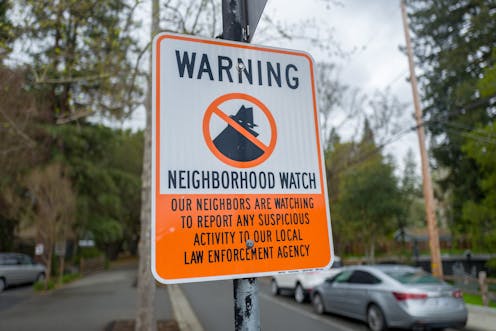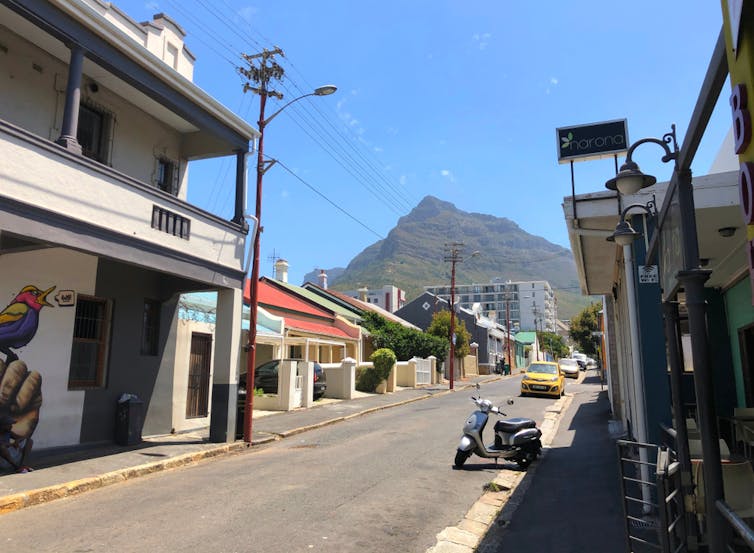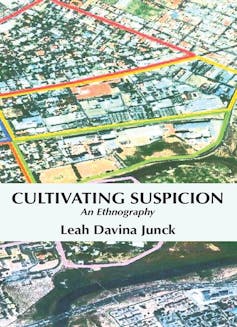
Trust in state institutions to protect citizens is a prerequisite for sharing social spaces. This trust is corrupted in South Africa, where there are persistent anxieties that crime and violence are out of control.
Despite considerable public spending on the police and security sector, the country has an enormous private security economy, as well as volunteer-based organisations for social protection like neighbourhood watch groups.
Decisions over access to public spaces, who is welcome, valued and protected – whose lives matter – is, of course, a global question. And it’s become apparent in recent years that social media, with its ubiquitous hashtags, opaque algorithms and content moderation practices, can equally firm social divides.
My research on a neighbourhood watch group in Observatory, a relatively affluent suburb of Cape Town, investigated what relationships of trust and distrust look like in this context.
The neighbourhood watch group had recently been revived. It had been established to decrease a feeling of vulnerability to crime through monthly strategy meetings and neighbourhood patrols.
It turned out, though, that patrols often took place in the form of ‘couch patrolling’ (making observations from the living room window and following social media communication). It also quickly became evident that commonplace technologies like WhatsApp, integrated into surveillance routines, played a notable part in shaping encounters in the suburb.
The main question I posed in my study, which is now the subject of a book, Cultivating Suspicion: An Ethnography, was how suspicion transpires in the neighbourhood watch. I describe how desires to feel safe as a group, recountings of the same crime stories, and internalised fears become entangled in everyday surveillance practices.
Social fears are important to consider not just in South African cities, which were the scene of forced removals of the unwanted and supposedly dangerous during the segregationist apartheid regime. But also for other urban spaces around the globe where gaping social divisions leap to the eye.
The study
Nestled beneath the iconic Table Mountain, Observatory is a residential area close to the city centre and the freeway, with a busy strip of cafes, bars and restaurants. Here one meets longtime residents, national and international students of the nearby university, tourists, workers and others coming in and out of the suburb daily.
Affectionately shortened to ‘Obs’, Observatory is usually described as bohemian and somehow different. Its liberal image is also owed to the ‘grey area’ status it had during apartheid, with different race groups mixing in public spaces despite the country’s laws.

Despite private security in the area, a supplement to the police force and financed by property owners, the neighbourhood watch group was considered necessary for reducing crime. Already a resident, I announced my interest as a researcher and joined the group in the hopes of learning what motivates its members. As an anthropologist, I wanted to know more about the dynamics of this suburb and how crime anxieties manifest. I began with the question of what people were looking for on patrols – who was considered suspicious?
I spent a year researching the fear of crime in Observatory. Attending meetings, joining patrols, listening to stories, interviewing key persons such as the manager of the private security staff, and occasionally accompanying the police on their drives, I could observe how fear became part of everyday practice.
The findings
The membership form explained that foot patrols were to be the main purpose of the neighbourhood watch. But few of the quickly growing members actually attended these. Most simply attended monthly meetings to voice their concerns.
For the most part, these members settled into ‘couch patrolling’. This involved watching the neighbourhood less formally, for instance from their house windows or on their way to the shop. They also followed the content of the active neighbourhood watch social media channels. In addition to WhatsApp groups (linked to police and private security), information was also shared via Facebook and email.
Read more: How CCTV surveillance poses a threat to privacy in South Africa
But what was the information shared in these groups? What were people looking for when patrolling physically or making sense of what they found on these social media channels? Who was the suspect that may be picked up by the police as a result of local surveillance practices?
My findings show that the neighbourhood watch group as a collective would spread suspicion in certain directions – not least of all through the use of social media apps. Images of ‘suspects’ that were circulated and recycled via different avenues (WhatsApp, Facebook, email and anecdotes) typically fell within the racial categories ‘Black’ and ‘Coloured’ and were marked by poverty.
Snapshots would capture people caught in the act of doing something that was judged as suspicious, although suspicious behaviour did not always amount to an actual crime. I would regularly wake up to rough descriptions of people on the WhatsApp groups, which included substitutes for racial terms such as Charlie (for Coloured), Bravo (for Black), and Whiskey (for White), with Charlie by far the most commonly used.
As some neighbourhood watch members criticised, these desriptions of ‘suspects’ were often not accompanied by an explanation as to why they were being flagged as being ‘up to no good’.
The answer I received to my question of what people are looking for on patrol was usually described as a gut feeling. Lively intellectual debates in meetings and digital chats did not change the fact that what kept resurfacing via the different platforms as descriptions of suspects was becoming concrete.
Suspected criminals were formed into an image of a suspect that was commonly male, dark-skinned, marked by meagre resources, and, understandably, avoiding exposure to the public eye.
Conclusion
Surveillance has rightfully become associated with innovative digital tools and is considered an issue of larger power structures. Yet, there are all kinds of less obvious and yet very problematic technologies at play that should not be overlooked – such as everyday surveillance using just our own bodies and cellphones.

Strategies developed by the neighbourhood watch group in Observatory to feel more in charge in what they felt was an out-of-control crime situation also meant maintaining a firm distinction between oneself and ‘the other’. Consequently, monitoring the suburb had a deep impact on what kinds of relationships became possible and whose humanity (namely the residents’) was prioritised over the needs of others (the declared suspects).
Leah Davina Junck does not work for, consult, own shares in or receive funding from any company or organization that would benefit from this article, and has disclosed no relevant affiliations beyond their academic appointment.
This article was originally published on The Conversation. Read the original article.







